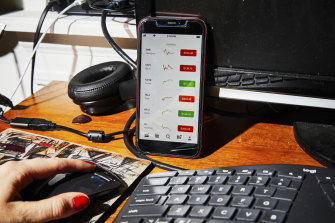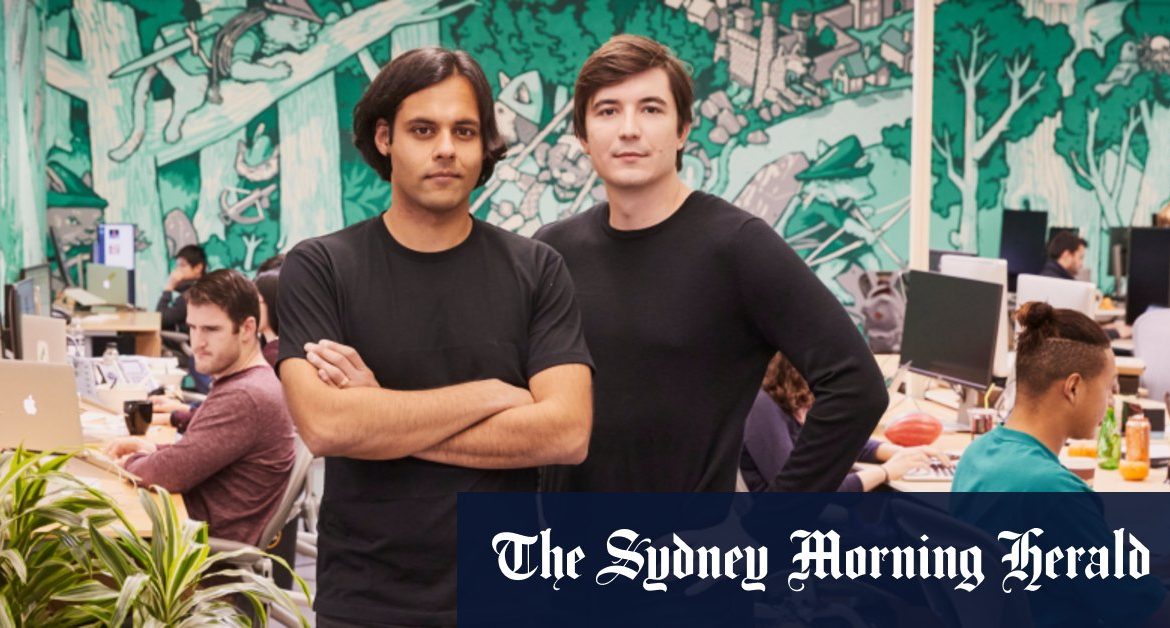Loading
A high-flying startup suddenly looked a lot like an overwhelmed, creaky company.
“From a marketing standpoint they position themselves as new, innovative, cool,” said Peter Weiler, the co-chief executive of the brokerage and trading firm Abel Noser. “What I think everyone is missing is, when you peel the onion back they are just a heavily regulated business.“
The fiasco will almost certainly have consequences for the company. The Securities and Exchange Commission said on Friday that it would closely review any actions that may “disadvantage investors or otherwise unduly inhibit their ability to trade certain securities.” Lawmakers on both sides of the aisle called for hearings over complaints that customers were shut out of trades.
After Robinhood limited some trading on Thursday and the price of the stock plunged, furious users flooded online app stores with vitriolic reviews, with some accusing Robinhood of doing the bidding of Wall Street. Others sued the company for the losses they sustained. Robinhood’s continuing vulnerability, even after raising $US1 billion, became clear on Friday when it restricted trading in more than 50 stocks.
“It was not because we wanted to stop people from buying these stocks,” Robinhood said in a blog post on Friday night. Rather, the startup said, it restricted buying in volatile stocks so that it could “comfortably” meet deposit requirements imposed by its clearinghouses, which it noted had increased tenfold during the week.
A small protest was held on Thursday in front of the New York Stock Exchange after Robinhood curbed trading in GameStop.Credit:Gabriela Bhaskar for The New York Times
None of this seems to be slowing down its growth. Even as Robinhood’s actions angered existing customers, it was winning new ones. The app was downloaded more than 177,000 times on Thursday, twice the daily download rate over the previous week, according to Apptopia, a data provider, and it had 2.7 million daily active users on its mobile app that day, its highest ever. That’s more than its rivals — Schwab, TD Ameritrade, E*Trade, Fidelity and Webull — combined.
All growth, few guardrails
Controversy is not new for Robinhood.
The two Stanford classmates who created the company in 2013 said from the beginning that their focus was on “democratising finance” by making trading available to anyone. To do so, the company has repeatedly employed a classic Silicon Valley formula of user-friendly software, brash marketing and a disregard for existing rules and institutions.
Loading
Online brokers had traditionally charged around $US10 for every trade, but Robinhood said that customers of its phone app could trade for free. The move drew in hordes of young investors.
In building its business, the company disregarded academic research showing how frequent, frictionless trading generally does not lead to good financial outcomes for investors. The risks to customers became clear last summer when a 20-year-old college student’s suicide note blamed a six-figure trading loss for his death.
Robinhood also popularised options trading among novices. An option is generally cheaper than buying a stock outright, but has the potential to lead to much bigger and faster gains and losses, which is why regulators and brokers have traditionally restricted trading in these financial contracts to more sophisticated traders.
Robinhood’s marketing, meanwhile, papered over the fact that its business model, and the free trading, were paid for by selling customer’s orders to Wall Street firms in a system known as “payment for order flow.” Big trading firms like Citadel Securities and Virtu Financial give Robinhood a small fee each time they buy or sell for its customers, typically a fraction of a penny per share. These trading firms make money, in turn, by pocketing the difference, known as the “spread,” between the buy and sell price on any given stock trade, and the more trades they handle, the greater their potential revenue. Many other online brokers rely on a similar system, but Robinhood has negotiated to collect significantly more for each trade than other online brokers, The New York Times has found.
The mismatch between Robinhood’s marketing and the underlying mechanics led to a $US65 million fine from the SEC last month. The agency said that Robinhood had misled customers about how it was paid by Wall Street firms for passing along customer trades.

Robinhood is particularly popular with young investors, but has come under heavy criticism during the Gamestop frenzy.Credit:Amy Lombard/The New York Times
The clash with Wall Street
Robinhood’s ambitions and amateurism collided in recent weeks as small investors, many of them on a mission to challenge the dominance of Wall Street, used its free trades to push up the stock of GameStop and other companies. Rampant speculation on options contracts helped drive the rise of GameStop’s shares from about $US20 on January 12 to nearly $US500 on Thursday — a rally that forced Robinhood to hit the brakes on its own customers.
One institution that tripped up Robinhood this past week is a clearinghouse called the Depository Trust & Clearing Corp. Owned by its member financial institutions including Robinhood, the DTCC clears and settles most stock trading, essentially making sure that the money and the shares end up in the right hands. (Options trades are cleared by another entity.)
But the DTCC’s role is more than just clerical. Clearinghouses are supposed to help insulate a particular market from extreme risks, by making sure that if a single financial player goes broke, it doesn’t create contagion. To do its job, the DTCC requires its members to keep a cushion of cash that can be put toward stabilising the system if needed. And when stocks are swinging wildly or there’s a flurry of trading, the size of the cushion it demands from each member — known as a margin call — can grow on short notice.
That’s what happened on Thursday morning. The DTCC notified its member firms that the total cushion, which was then $US26 billion, needed to grow to $US33.5 billion — within hours. Because Robinhood customers were responsible for so much trading, Robinhood was responsible for footing a significant portion of the bill.
While it cobbled together the needed cash from its credit line and investors, Robinhood limited customers from buying GameStop, AMC and other shares. Allowing its investors to sell these volatile stocks — but not buy them — reduced its risk level and helped it meet requirements for additional cash, Robinhood said in its blog post.
Loading
Ultimately, the company succeeded in pulling together roughly $US1 billion from some of its existing investors, including the venture firms Sequoia Capital and Ribbit Capital. As a sweetener, Robinhood issued special shares to those investors that will give them a better deal when the company goes public, as early as this year.
But the quick deal left more than one observer scratching their heads.
“How does an online broker find itself in need of an overnight infusion of a billion dollars?” asked Roger McNamee, a longtime investor who co-founded the private-equity firm Elevation Partners.
“There’s something about this that says somebody is really scared about what’s going on.”
The New York Times
Business Briefing
Start the day with major stories, exclusive coverage and expert opinion from our leading business journalists delivered to your inbox. Sign up for the Herald‘s here and The Age‘s here.
Most Viewed in Business
Loading







